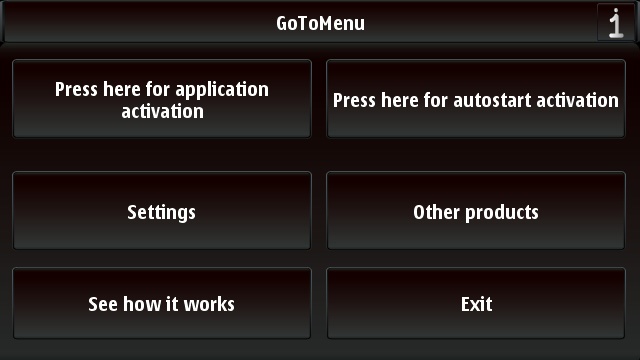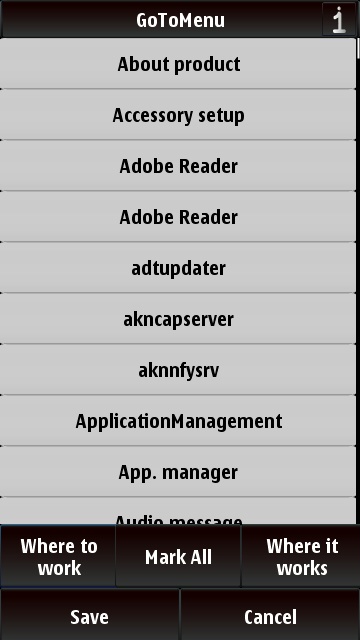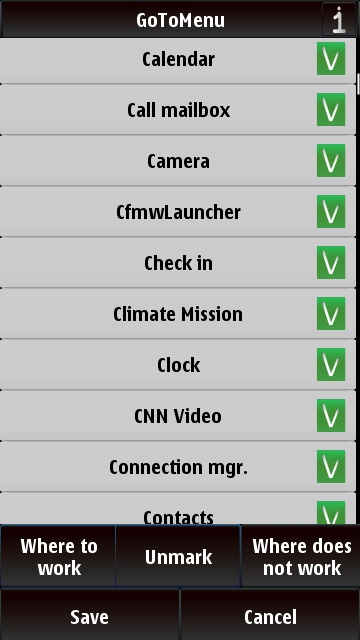Review: GoToMenu
Score:
79%
The Nokia N9's SwipeUI is probably the biggest user interface innovation in the mobile industry this year. The gesture driven system has had many a geek looking on with envy. So much so that it seems to have inspired DzSoft to create GoToMenu for touch enabled Symbian devices. Read on to find out how well this approach works when grafted on top of the older Symbian touch UI.
Version Reviewed: 1.1
Buy Link | Download / Information Link
For those who aren't yet familiar with Nokia's SwipeUI, allow me to explain what all the fuss is about. The Nokia N9 lacks a traditional home screen, as Symbian users are used to. Instead, it has three screens; an application grid, a notifications screen, and a multitasking view, which are switched between via a swipe gesture. From within an application, the user can return to the last screen they were on by swiping horizontally or vertically across the screen. Closing applications is achieved via long press on the multitasking screen.
What DzSoft have tried to do with GoToMenu is apply that same fluid style of interaction to the Symbian touch interface. What GoToMenu doesn't do is emulate SwipeUI atop Symbian. Instead, it uses gesture interaction to access the Symbian's application grid and switcher.

GoToMenu's main menu, including illustrated instructions.
At the home screen level, Symbian already has horizontal gestures, therefore GoToMenu has to use vertical gestures. Swiping upwards opens the application grid, and swiping down calls the task switcher. Confusingly though, those gestures are turned ninety degrees in applications. That is, the up and down gestures have no effect, and one needs to swipe from the left to the right to call the task switcher, and swipe in the opposite direction to call the application grid, and a second swipe gets you back to the home screeen.
This is puzzling at first, but I can see why it should be the case. Clearly making horizontal swipes with a thumb is the most comfortable and accessible gesture to perform. However, these gestures are already spoken for on the home screen. So instead, DzSoft have used the horizontal gestures where they can, and made do with alternatives where they can't. It's inconsistent but it gets the job done.


Here I'm setting in which applications GoToMenu is allowed to work
One could rightly point out that this approach is wasted on Symbian, because these functions are what the menu key is for. A single press brings up the home screen, from where a second press shows the application grid, and a long press brings up the task switcher. So yes, GoToMenu introduces some redundancy. On the Nokia N9, the gestures are absolutely needed because there is no home button at all.
In the case of Symbian, this approach has to come down to personal preference. Being able to access core operating system features (i.e. application grid and switcher) without breaking away from the screen makes my interaction with the device feel much more fluid.
In my experience of mobile devices, two things can break the fluidity of interaction, that is long presses (on both physical and virtual buttons), and having to switch between pressing glass and pressing buttons. Breaking away to press any sort of fixed button (on any platform) really takes you out of the user experience shown through the screen. It is even worse to have to wait for the long press to access the task switcher before carrying on to work in another application.
This is what GoToMenu can help with, as quick swipes across the screen negate the need to wait for long presses, for reaching down to the menu key, and for mentally switching between physical buttons and glass. I'm sure there are those that will disagree with my reasoning, but that's the great thing about having plenty of options!
GoToMenu is available in the Ovi Store for £1.00.
Recommended.
David Gilson for All About Symbian, 21st August 2011.
Reviewed by David Gilson at
